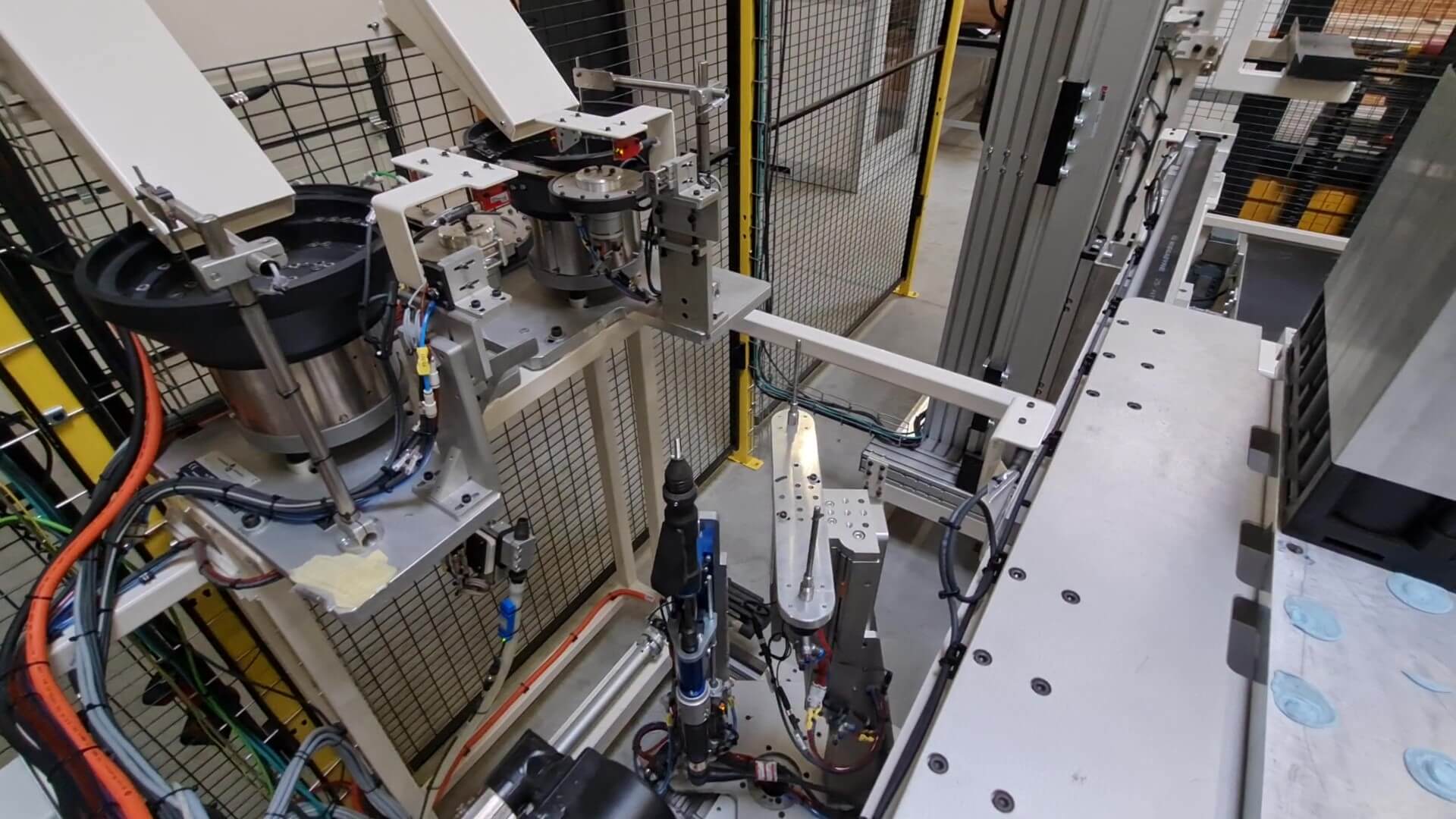Robot island: definition and applications
Thanks to its years of expertise, CIM Atlantique can deploy a
robotic island
adapted to your company’s needs in your workshops or factories. These islands can carry very heavy loads, and are ideal for joining elements together. The most common applications for a robotic island are press loading and unloading, parts handling, or the robotization of an assembly station.
A robotic island can be adapted to any kind of industry, loading or unloading automotive or aeronautical parts, for example. It is of course possible to set them to a specific processing speed tooptimize your productionyield.
Grippers can also be designed and integrated into existing lines. They are fully automated by CIM Atlantique technicians, so you don’t have to worry about setting any parameters. They take into account your specific constraints, as well as your methods for managing and sorting part flows, to guarantee optimum results.
In a nutshell, a robotized island enables the robotization of a workshop, freeing it from the constraints associated with the operation of an operator. Complete automation of a production line, from part handling to process control, offers a clear competitive advantage, both in terms of the cost of running the line, and in terms of the human factor, which can trigger numerous errors compared to a robotized island.

Intelligent automation for electromobility
For Alstom’s new TGV high-speed train, CIM Atlantique has developed robotized islands for screwing lithium batteries onto connecting plates. The robot, using multiple gripping systems, handles and stores the Cell Blocks (CB) in a vertical stocker and transfers them to the cold plate. Another robot gripper handles cold plates and a jig for handling the sub-assembly after assembly.
The Cell Blocks are assembled on a cold plate using an electrically-driven screwdriver. The system distributes two washers and controls the torque and angle of each screw. Particular attention was paid to the safety of therobotic island.
Argonite fire-fighting systems have been integrated into the test benches and the storage system. In addition, a lithium-ion battery anti-drop system has been developed for the gripper. The island’s own inverter and pneumatic tank ensure that cold plates and jigs can be safely plugged in in the event of power loss.

An island 4.0
Automation of therobotized island enables traceability of the entire assembly line by scanning each Datamatrix code of each battery and cold plate. All the island’s inputs/outputs are wired on I/O Link splitters, enabling high-precision status of each input/output, and the development of a predictive maintenance system in the long term. A wireless tablet is used to control therobotic island , providing the operator with a high degree of mobility. Thanks to Yaskawa’s MOTOLOGIX software, the robot is directly controlled by the Ihm and the PLC. There’s no need to program trajectories on the robot teach.



